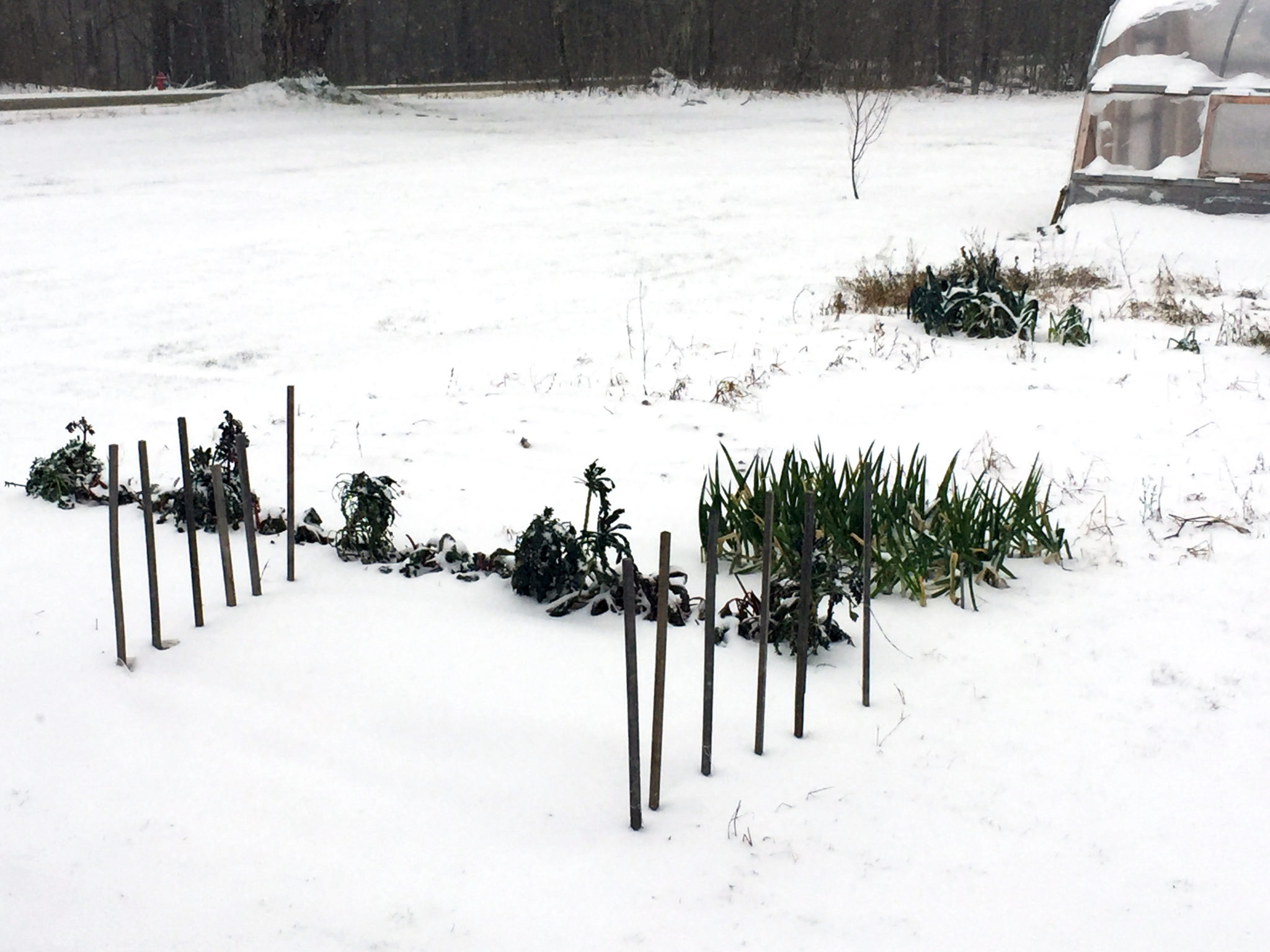valley ranch
Garden Master
- Joined
- Dec 22, 2014
- Messages
- 5,742
- Reaction score
- 5,733
- Points
- 367
A BEGINNER’S GUIDE TO OVERWINTERING VEGETABLES

Growing vegetables during the winter is no feat of magic; it’s just a little bit of clever gardening. Overwintering vegetables is the practice of leaving vegetables in the ground during the winter to harvest in the spring. While your gardening instincts may balk at the idea, certain crops are able to withstand the cold, and timing your planting accordingly can yield a more diverse harvest.
How to overwinter vegetables
Your winter garden would benefit from some protection. After all, you aren’t the only one who enjoys vegetables during those cold winter months; voles and mice like snacking on the vitamin-rich crops left in the ground during the challenging season. You can protect your winter garden from pests by growing them in a cold frame, an easily-assembled windowed box that will grow plants all winter.
“If you have them in a cold frame, you are both protecting from outside cold and against critters,” says Eliot Coleman, owner of Four Seasons Farms and author of The New Organic Grower. “You can pull carrots every day all winter.”
Small hoop tunnels can also be used for added protection from the winter elements, but the elaborate apparatuses aren’t necessarily required. Some winter-hardy vegetables are content to stay in the ground all winter (though you just may find some nibbled crops in your garden come spring). If hard frosts are commonplace in your neck of the woods, cover your crops with a little extra insulation, like a layer of hay or a garden fleece, and they will be ready to ride out the cold.
What vegetables can you grow in a winter garden?
Root vegetables like carrots, beets, and turnips are great for overwintering. Cold temperatures will even initiate a process known as chill-sweetening, in which the plants convert starches to sugar and yield a crisp, candy-like vegetable come spring. Kate Garland, horticulturist at the University of Maine Cooperative Extension, fondly recalls images of master gardeners in the northern reaches of Maine pulling beautiful carrots out of the ground in the middle of January.
There are a few other crops that will survive the cold, like potatoes and cabbage. Garlic, onion, and leeks can also be left in the ground until the spring harvest, though they are a little more susceptible to wet conditions. With the benefit of added cover like a small hoop tunnel, leafy greens like kale, broccoli, and spinach will also stand up to cold conditions. Ideally, overwintered crops should be planted in the fall for harvest in the early spring.

 hellohomestead.com
hellohomestead.com
Growing vegetables during the winter is no feat of magic; it’s just a little bit of clever gardening. Overwintering vegetables is the practice of leaving vegetables in the ground during the winter to harvest in the spring. While your gardening instincts may balk at the idea, certain crops are able to withstand the cold, and timing your planting accordingly can yield a more diverse harvest.
How to overwinter vegetables
Your winter garden would benefit from some protection. After all, you aren’t the only one who enjoys vegetables during those cold winter months; voles and mice like snacking on the vitamin-rich crops left in the ground during the challenging season. You can protect your winter garden from pests by growing them in a cold frame, an easily-assembled windowed box that will grow plants all winter.
“If you have them in a cold frame, you are both protecting from outside cold and against critters,” says Eliot Coleman, owner of Four Seasons Farms and author of The New Organic Grower. “You can pull carrots every day all winter.”
Small hoop tunnels can also be used for added protection from the winter elements, but the elaborate apparatuses aren’t necessarily required. Some winter-hardy vegetables are content to stay in the ground all winter (though you just may find some nibbled crops in your garden come spring). If hard frosts are commonplace in your neck of the woods, cover your crops with a little extra insulation, like a layer of hay or a garden fleece, and they will be ready to ride out the cold.
What vegetables can you grow in a winter garden?
Root vegetables like carrots, beets, and turnips are great for overwintering. Cold temperatures will even initiate a process known as chill-sweetening, in which the plants convert starches to sugar and yield a crisp, candy-like vegetable come spring. Kate Garland, horticulturist at the University of Maine Cooperative Extension, fondly recalls images of master gardeners in the northern reaches of Maine pulling beautiful carrots out of the ground in the middle of January.
There are a few other crops that will survive the cold, like potatoes and cabbage. Garlic, onion, and leeks can also be left in the ground until the spring harvest, though they are a little more susceptible to wet conditions. With the benefit of added cover like a small hoop tunnel, leafy greens like kale, broccoli, and spinach will also stand up to cold conditions. Ideally, overwintered crops should be planted in the fall for harvest in the early spring.

A beginner's guide to overwintering vegetables | Hello Homestead
Overwintering vegetables is a great way to extend the growing season — and grow some great food. Here's how to get started with a winter garden.
 hellohomestead.com
hellohomestead.com
